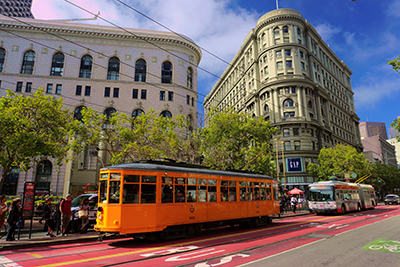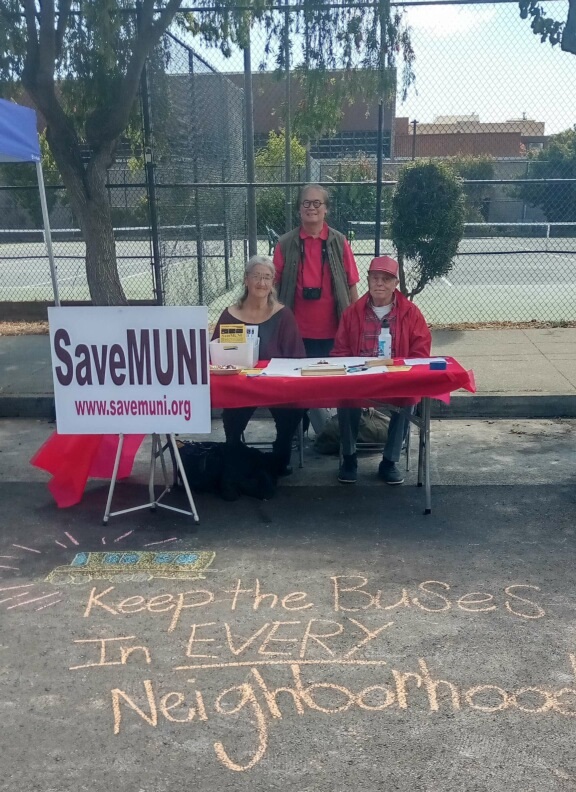Brent Jones, SFMTA Director of Transit Responds to SaveMUNI Questions
SaveMUNI Questions Concerning Muni
Operations
Date: August 20, 2025
1) Muni Metro (MM) recently experienced a significant service breakdown during the AM
peak. Are you confident that you have the funding and staff capability to maintain MM in a state
of good repair ?
The service disruption you described was related to a software issue. The existing Automatic
Train Control System was rebooted and the system experienced residual delays as each train
was manually reconnected to the system.
As you indicated, modernizing Muni Metro’s train control is the most critical long-term
investment to improve Metro reliability, safety and service – making Metro fast, frequent,
reliable and safe. The good news is that work is already underway to do just that.
The Train Control Upgrade Project will replace and upgrade the existing Automatic Train
Control System in the Muni Metro subway with a modern, state-of-the-art Communications-
Based Train Control (CBTC) system that will extend citywide. Modern technology will also
give us more bandwidth and sophisticated capabilities to do even more to improve Muni
Metro.
We expect to begin installing the new train control system in 2026. Complete installation
systemwide is expected between 2032 and 2034. The SFMTA approved funding for this
project in our FY2025-2029 Capital Improvement Plan (CIP). We are also pursuing regional,
state and federal grants to augment funding for TCUP and other maintenance and state of
good repair projects in the CIP.
While work is underway to update our Automatic Train Control System to Communications-
Based Train Control, our Muni Metro operations team is working diligently to ensure smooth
day-to-day operations of Muni Metro and reduce customer delays. Since July 2019, moderate
delays are down 66% and long delays are down 61%.
2) The Cable Cars offer tourists a unique San Francisco experience and provide a source of
revenue for Muni. But at least half the scheduled fleet of cable cars are on dwell at the four
terminals. What measures are being taken to improve the throughput of the cable car system ?
You are absolutely right. Within Operations, we’re actively working on our service
management strategies to decrease the time needed for cable cars turn around at the
terminals. We’re also getting ready to pilot a project to collect performance data, which we
currently don’t have.
This lack of performance data makes it difficult to pinpoint key issues, evaluate service
delivery or implement Key Performance Indicators (KPIs) for operators.
3) Since the L Metro line has been reinstated, there are now five trunk lines in the tunnel. Do
you believe that the existing service provides enough capacity, and if not, what measures are you
undertaking ?
Currently, Metro ridership is at about 60% of pre-pandemic levels. As a result, we’ve been
able to run less Metro service and still meet demand. This has also reduced subway
congestion and delays. Muni Metro ridership has been growing each year since the
pandemic. Now we are starting to see overcrowding again, particularly on the N Judah.
In the immediate term, our service planning team regularly reviews crowding data. They
adjust to service frequencies to minimize crowding within existing operational resources.
In the medium to long term, the Muni Metro Capacity Study is focused on ensuring there will
be enough capacity for future riders. The Study has developed multiple scenarios of future
ridership forecasts and developed draft recommendations on what capital upgrades would be
needed to serve future demand. Stay tuned for more information about the Study’s draft
recommendations in September. The Study team is also available to join a SaveMUNI
meeting in September or October to share more and receive feedback.
4) When the fleet of articulated trolley coaches will be unable to use Potrero due to the
reconstruction, will other fleets be substituted on those lines now serviced out of that yard ?
Currently service planning is underway for the planning related to the reconstruction of
Potrero Yard. The Potrero Yard Modernization Project will replace our obsolete, century-old
bus yard with a modern, efficient bus maintenance and storage facility, equipped to serve the
SFMTA as it transitions to an all-electric fleet.
As we rebuild this facility, we hope to be able to accommodate some trolley coaches at other
Muni yards. We will also likely substitute some service with other types of vehicles. As these
plans evolve, we look forward to collaborating with our labor partners to bring them to fruition.
5) Muni initiated service changes earlier this year including truncating several lines. Are you
planning another round of service changes and reductions in the next twelve months ?
We know that Muni service is a lifeline for many. Quality public transportation is also key to
San Francisco achieving its climate, equity and economic recovery goals. So, we don’t take
making changes to Muni service lightly. Before we truncated service in June, we were facing
a $50 million budget shortfall in the current budget because parking revenue, transit revenue
and General Fund reimbursements are lower than we’d expected. This is largely a result of
the pandemic and its economic impact. As we were able to address the budget shortfall in
June with our service changes, we do not expect to make further service reductions in the
next year.
Looking ahead, we are navigating a $322 million budget deficit that starts next year in July
2026. To bridge this gap, we are constantly looking for ways to reduce spending and be even
more efficient.
To gather public input, identify solutions and prioritize options to address the funding gap, the
SFMTA and San Francisco Controller’s Office convened the Muni Funding Working Group in
September 2024. It considered several options in these categories to both decrease costs
and increase revenue:
• Efficiency Improvements: streamline systems and processes to further decrease
operating costs.
• Service Cuts: reduce service and/or subsidies to decrease operating costs.
• Revenue Enhancements: increase fees, revenue, or taxes to increase overall revenue.
• Service Enhancements: enhance services to win voter support for new revenue.
The guidance from the Muni Funding Working Group was to go big at the ballot and raise new
revenue instead of making cuts to transit service.
We also worked collaboratively with the Metropolitan Transportation Commission, state
legislators and other Bay Area transit agencies on a new regional revenue measure for the
Nov. 2026 ballot.
6) In reference to headway management – hill and owl lines are now at 50 % adherence.
Reference was made to “re imagining hill lines” for the GSU in February. What does “re
imagining” mean ?
When we talk about “reimagining” our hill lines, we are referring to a comprehensive
reassessment of our travel times. Our Owl and Connector routes operate on a schedule, and
we are working to address issues related to vehicles running early.
The goal of this “reimagining” is to make a round of travel time adjustments. By doing so, we
aim to improve our overall on-time performance and bring the headway adherence back up
from the current 50%. This process is crucial for ensuring our service is reliable and meets
the needs of our riders.
7) Is Muni considering upgrading its headway management based on Seattle Metro’s
capability ? If not what remedy for headway management shortcomings is SFMTA pursuing ?
We spoke with King County about our experiences with headway management, and they
confirmed they’re facing similar challenges with technological limitations. However, as part of
our upcoming CAD/AVL (Computer-Aided Dispatch/Automatic Vehicle Location) upgrade, we
will receive a host of new features that will finally allow us to manage our terminals based on
headways.
This new system provides a suite of upgrades designed to enhance our service management.
It will give us the ability to calculate and manage terminal departures based on headway, not
just schedules. It will also provide dynamic headway management, which is a crucial
capability that was lacking in our previous system. The system will give us live data on vehicle
position, including whether a vehicle is early, late, or on time, and will provide an audible alert
when a vehicle is running early to help prevent bunching.
It will also include features for customer information, allowing us to determine the predicted
departure time from a terminal based on headway. Furthermore, the system will provide us
with real-time information about gaps and bunches in our service, and the capability to adjust
and manage route spacing dynamically. The new CAD/AVL bundle will give us the necessary
tools to proactively manage our fleet and improve on-time performance.
8) In reference to the stated Muni goal of financially efficient operations, has any study been
conducted to consider autonomous vehicle applications on Muni connector lines ?
Muni now has one of the most diverse transit fleets in the world and is also the cleanest
multimodal fleet in California. Our state-of-the-art fleet of electric trolley and hybrid buses
reduce or eliminate greenhouse gas emissions, helping San Francisco lead the way to a
sustainable future.
San Francisco is the second major city in the US where travelers who can afford them have
access to commercial autonomous vehicle (AV) ride-hail. That said, AV transit vehicles are
still in early stages of development and SFMTA has no plans to use autonomous




